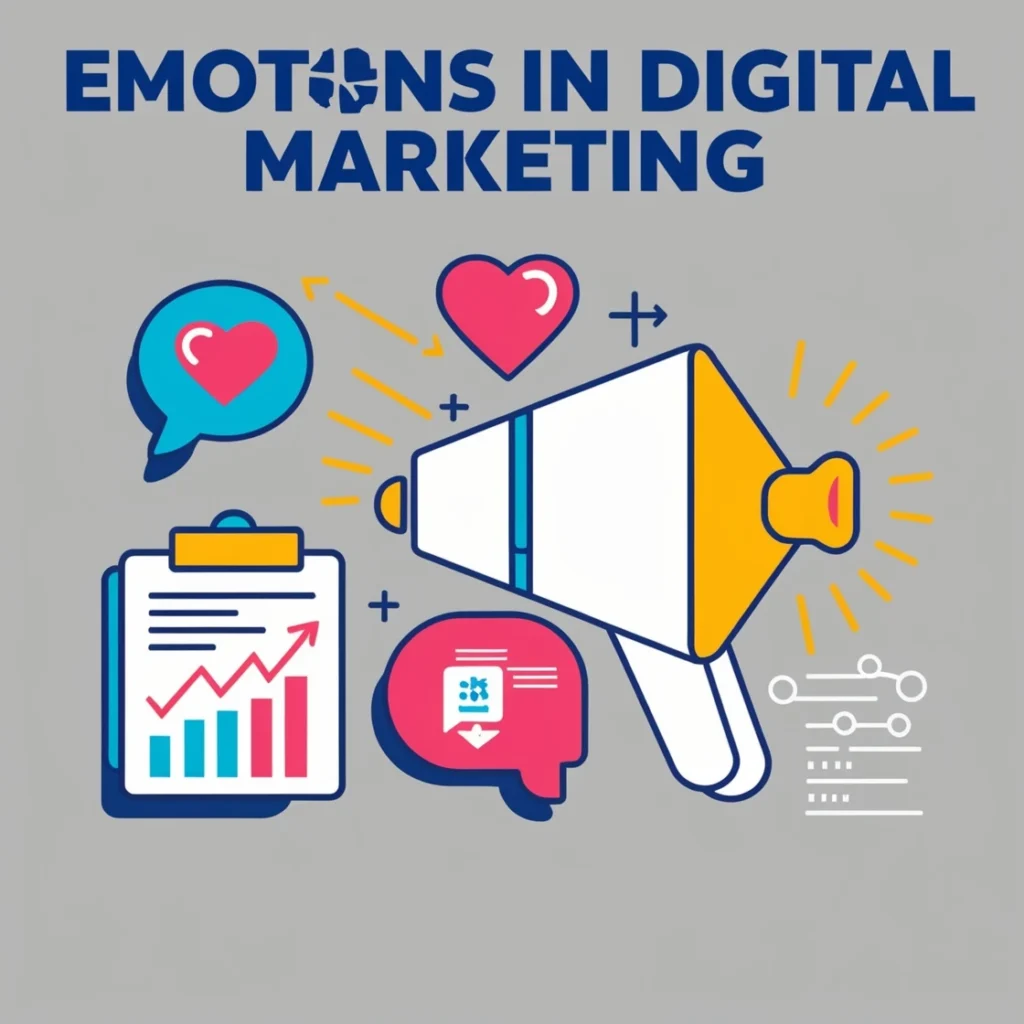
Feeling is the heart of any marketing campaign in building connection with your audience. On clicking an emotion, the engagement mounts and a person becomes activated, observes a thing, and the brand is emotionally linked to its target audience, which will decide whether the person who has heard about a product goes on to actually buying it or not. If you use emotions in digital marketing such as happiness, nostalgia, trust, or even fear, your campaign will be more powerful and reach your audience in a deeper way.
By using emotions in digital marketing related to your audience, you are creating stronger responses. Think of an ad or social media post that made you feel something-it made you smile, share it with your friends, or perhaps even buy the product. That’s actually the real power of using emotions.
Roles of Emotions in Consumer Choices
Emotions are a big part of how we decide to buy things. It turns out that almost 95% of what we decide is based on how we feel, not on logic. This explains how people may give their reasoning behind choices based on facts and numbers, but emotions are the actual first guiding factor. Knowing how digital marketing’s function through emotions will mean that marketers can craft the messages with a human feel and people will remember them.
For example, a feel-good advertisement is probably going to be remembered and share around. An advertisement that uses fear, such as informing someone that they are missing out on a great opportunity, could have people make fast decisions. Feelings can build loyalty and trust over time if applied.
Important Emotions That Influence Buying
Not all emotions in digital marketing work the same to impact purchasing decisions. The entire strategy should define how to exploit which of those emotions best works for the effective emotions in digital marketing. Let’s consider some of these;
Happiness: Filled smiles and laughter. Happy content-people share and engage with the brand likely.
Surprise: Sometimes, something very unexpected in the campaign catches people’s attention quickly. It makes them curiously interested in learning more.
Fear: Fear is much stronger but must be used wisely. For instance, FOMO-the fear that you would miss something-can provoke people to act quickly but overuse can act as a backfire.
Trust: Trust is a long-term relationship builder with your customer. Real stories, testimonials, reviews, etc., help earn trust from the target audience.
Nostalgia: Customers love the feeling of being associated with pleasant memories of the past. A brand creating an emotional connection between them and the moments is loved by all.
How to Use Emotions in Your Digital Marketing Campaign
Use of emotions in digital marketing requires a good deal of creativity and experience with your target audience. Here are some ways:
Storytelling: More than just facts, stories touch the heart and linger longer in people’s minds. Sharing customer stories or brand journeys goes a long way to establish an emotional connection. People have related to their experiences when they could imagine themselves part of it.
Visual content: Picture and video are quick ways to engage people with an emotion. High-quality visuals on happiness, inspiration, or everyday life moments pull a lot of attraction and positive emotion.
Personalization: Personalized communication feels more direct and special. If brands use customer data for such made-for-audience content, they better interact as if they cared about the audience.
Social Proof: A person believes what others have to say about the product or service. Positive reviews, testimonial support, and user generated content create feelings of trust and security. It gives people positive feedback on something they’re considering buying and enhances their confidence in their decision.
Call-to-action (CTA) Strategically: Use emotional language, too. Instead of “Buy Now,” do “Join our Happy Customers” or “Feel the Difference.” That little bit can make people more interested in clicking.
Content Empathy: Understand what your audience feels and mirror it in your messaging. When people feel seen and understood, they connect with the brand more deeply.
Case Studies: Brands That Use Emotions in Digital Marketing
In that sense, several popular brands used emotions in digital marketing to their advantage. Now, let’s take a couple of examples:
Coca-Cola: “Share a Coke” created bottles with common names on them. It transformed it into a personalized as well as fun experience for people. They enjoyed and celebrated finding a bottle with their name or sharing one with a friend. The little act of bonding saw increased sales as well as much social media sharing.
Always: The “Like a Girl” campaign dredged up stereotypes and inspired women and girls. It was emotional, and everyone shared it because it was very relatable. Brand loyalty and awareness increased with the campaign.
Apple: The style of storytelling and emotion in the Apple ads is quite unique. The ads do not talk of the device but how it makes its owner feel. This approach brought a big group of loyal customers who are attached to the brand.
Why Emotions in Digital Marketing Work
In advertising, what makes it emotional work is that they tend to create memories. People tend to remember a feel than facts or stats. Brands using emotions in digital marketing stand out and make great impressions-from a funny video creating joy, customer testimonials to build trust, to any kind of emotion that drives action.
Tips for Adding Emotions in Digital Marketing to Your Strategy
Know your audience: know what it is that makes your target audience happy, excited, or even a little scared. That’s going to be the best foundation for what you write.
Keep it real: there is no better connection than authentic stories and emotions. For example, share behind-the-scenes moments, your actual customer experiences, and so on.
Testing and Learning: Test different emotions in your ads and see which appeal works better. Some markets are very sensitive to humor-related advertisements, and others greatly appreciate emotional stories.
Conclusion
Using Emotions in Digital Marketing: Connecting Brands with Their Audience. Brands can get a person to open up and do something if they invoke certain emotions like joy, trust, nostalgia, and even a little fear. Storytelling through marvelous visuals and personalizing leads to really high engagement and sales for brands.
Where the magic lies-in content, reaching your audience’s heart. A well-executed digital marketing strategy has the potential to make emotion help turn ordinary campaigns into memorable ones. Get started with emotion in marketing and observe how your audience would connect with it and your brand.
Emotions in digital marketing has to be consistent, for you to get the best end results. This aspect begins from social media posts to emails, content on your website. Maintaining a message will ensure that the emotional bond strengthened develops further. Track your audience response to different emotional triggers and therefore adjust as needed. This way, your campaigns will always be timely and impactful enough to resonate with your customers for long-term engagement and trust-building purposes.
Using emotions in digital marketing can help you connect better with your audience. If you need help creating strong campaigns, I can assist as a freelance digital marketer in Calicut. My work in SEO, social media, and content can make your brand’s message clear and engaging. Check out my portfolio to see how I can help grow your online presence.
